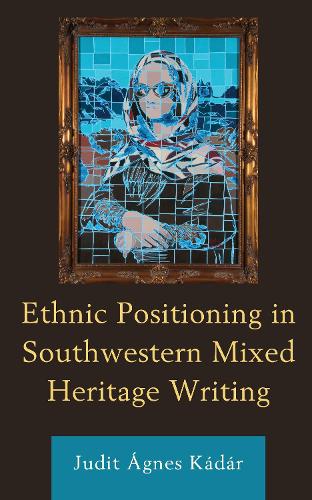
Ethnic Positioning in Southwestern Mixed Heritage Writing
(Hardback)
Publishing Details
Ethnic Positioning in Southwestern Mixed Heritage Writing
By (Author) Judit gnes Kdr
Bloomsbury Publishing PLC
Lexington Books
4th April 2022
United States
Classifications
Professional and Scholarly
Non Fiction
810.9979
Physical Properties
Hardback
228
Width 161mm, Height 227mm, Spine 24mm
517g
Description
Ethnic Positioning in Southwestern Mixed Heritage Writing presents how Southwestern writers and visual artists provide an opportunity to turn a stigmatized identity into a self-conscious holder of valuable assets, cultural attitudes, and memories. The problem of mixed ethno-cultural heritage is a relevant feature of North American population, and millions face similar challenges. Narratives on blended heritage show how mixed-race authors utilize their multiple ethnic experiences, knowledge archives, and sensibilities. They explore how individuals attempt to cope with the cognitive anxiety, stigmas, and perceptions entailed by blended ethnic heritage, how family and social dynamics work, and how ethnic identity is re-negotiated. The Southwest as a region is heavily ridden by Eurocentric and Colonial concepts of identity and at the same time heavily treasured by the Frontier experiences of physical mobility along with the entailed mental and spiritual journeys and transformations. Judit gnes Kdr argues that the process of ethnic positioning and choice results in re-negotiated identities and more complex and engaging concepts of themselves.
Reviews
Ethnic Positioning in Southwestern Mixed Heritage Writing by Judit gnes Kdr focuses on an exciting topic that is appealing even for a psychologist. I believe the approach it provides is quite innovative. Reading this book is an enriching experience, for it illuminates the highly complex nature of identity and explores the path along which it is unfolding and developing.
--Mrta Flp, Secretary-General of the International Association for Cross-Cultural PsychologyHalf-blood, crossblood, mestizaje, inter-tribalism, the new cosmic race--the writing of mixed heritage in the US Southwest offers a "world of enchantment." Like the mesmerizing landscapes in New Mexico, the book provides a well-rounded account of "mixedblood messages" that resonate with the poetry, prose, fiction, and memoir of Paula Gunn Allen, Leslie Marmon Silko, Gerald Vizenor, Louis Owens, Joy Harjo, Marla Allison, Diego Romero, and others. Rich in contextual framework and complex in textual reading, it dives into the interwined layers of history, culture, psychology, and politics of multiracial identity. For anyone interested in mixed heritage and its narrative formulation, this book will prove to be an indispensable road map to the literary landscapes in the Southwest.
--Iping Liang, National Taiwan Normal UniversityAuthor Bio
Judit Kdr is Director of International Relations at the University of Physical Education, Budapest.
